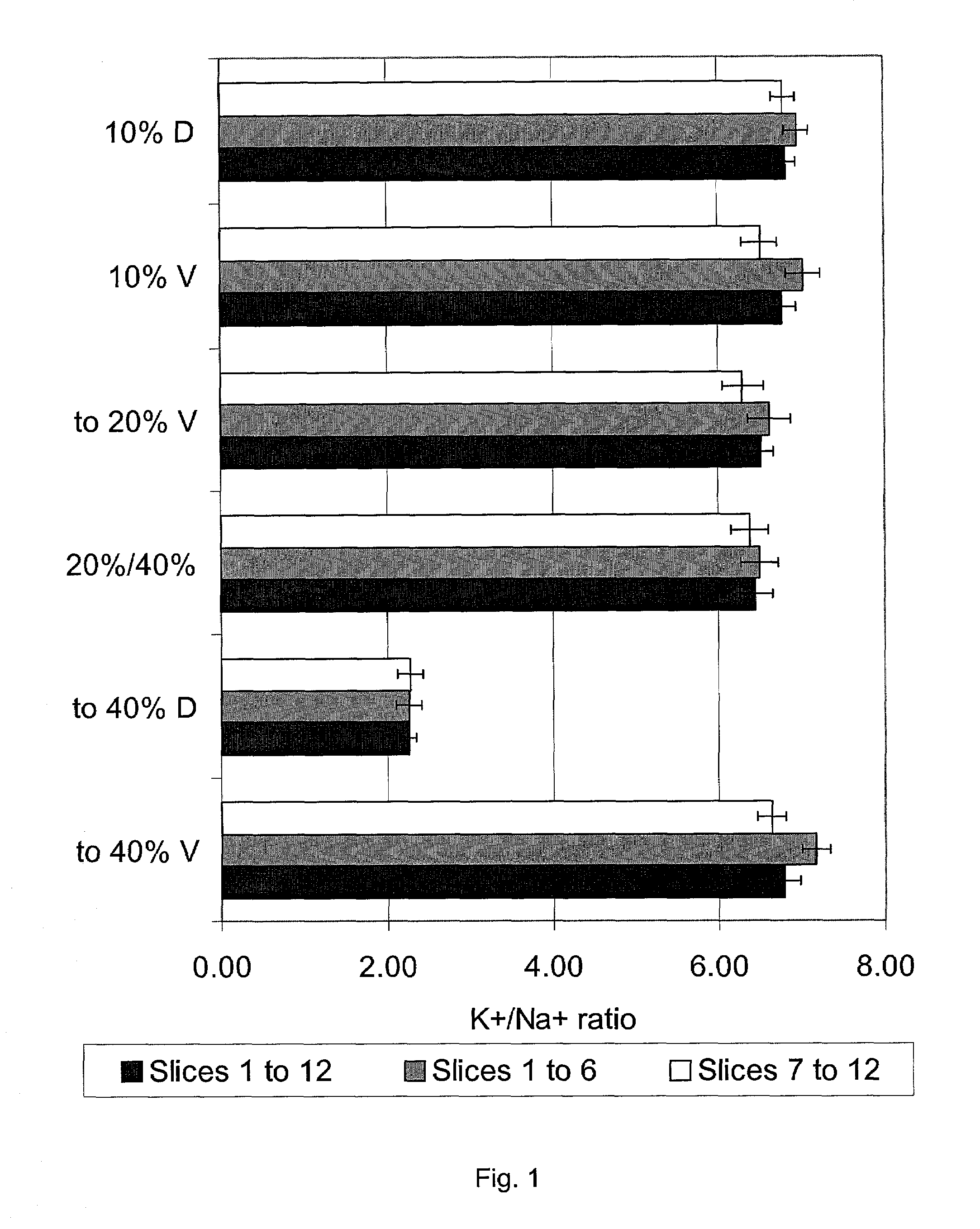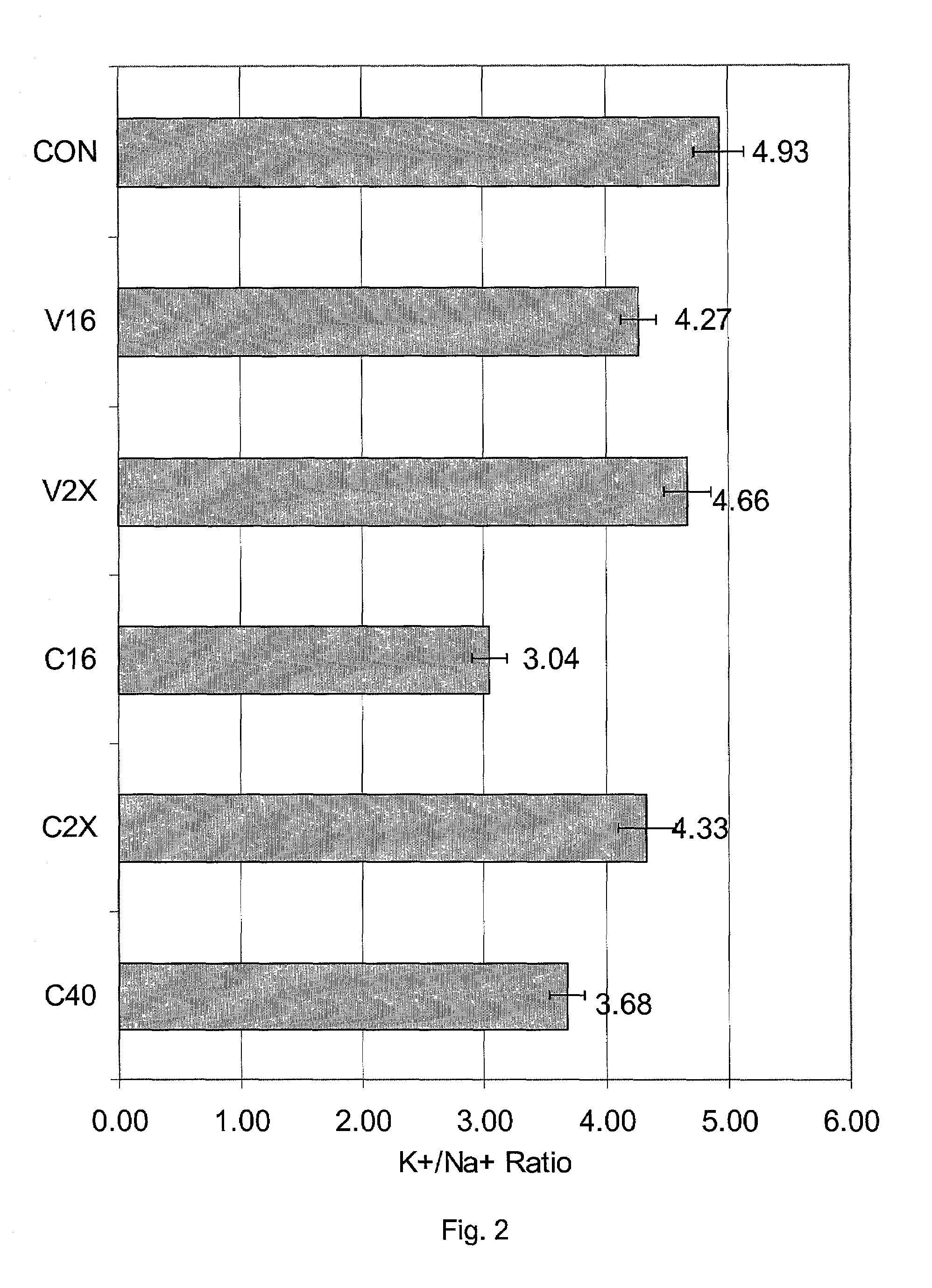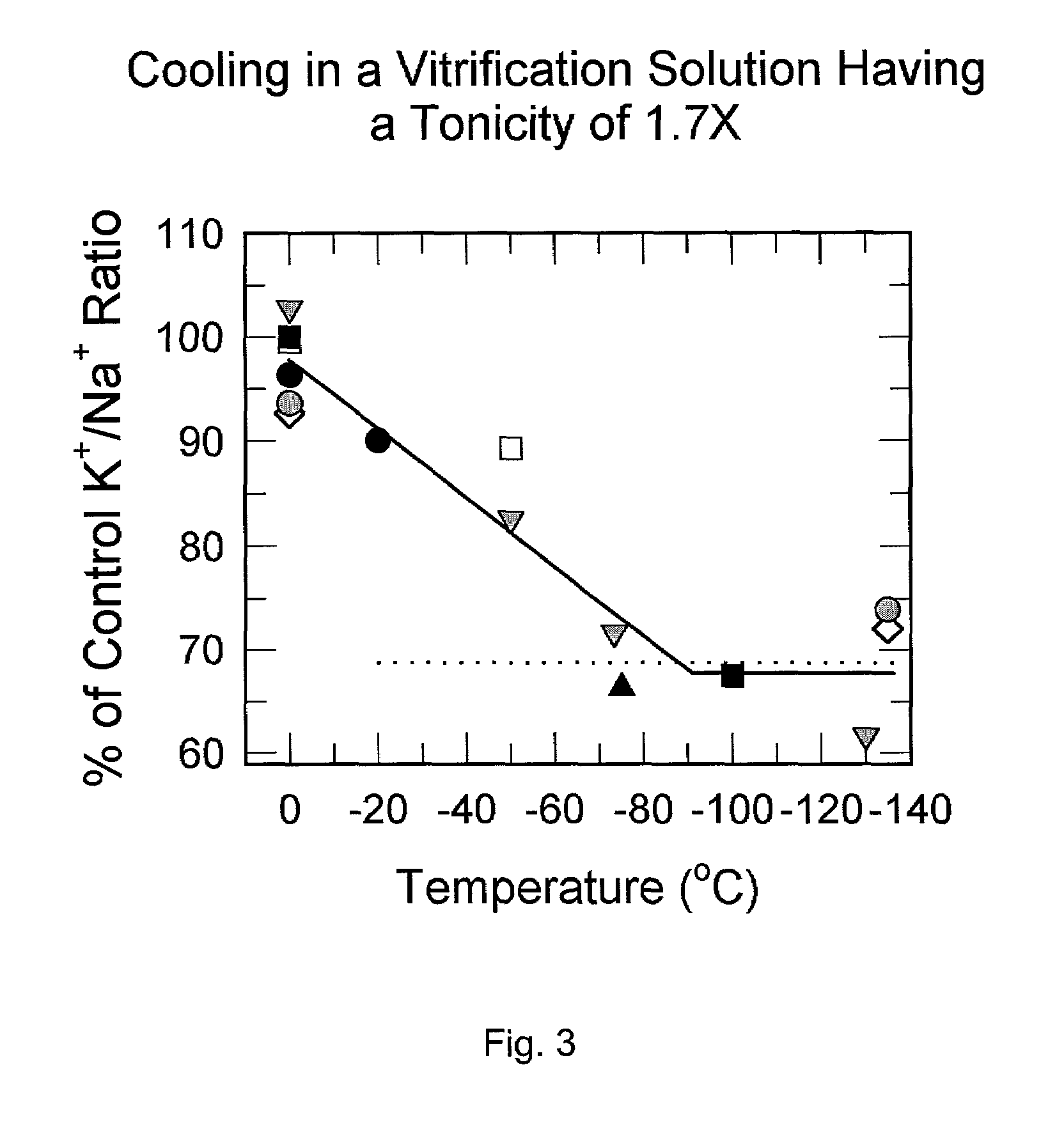Hypertonic reduction of chilling injury
- Summary
- Abstract
- Description
- Claims
- Application Information
AI Technical Summary
Benefits of technology
Problems solved by technology
Method used
Image
Examples
example 1
Tolerability of Enormous Tonicity in the Presence of Large Concentrations of Cryoprotectant and Tolerability of Enormous Positive and Negative Step Changes in Tonicity Coupled with Large Changes in Cryoprotectant Concentration
[0046]FIG. 1 shows the effects of simulating the freezing of 0.5 mm-thick rabbit renal cortical slices in either 10% w / v DMSO or 10% w / v Veg (Veg is a mixture of DMSO, formamide, and ethylene glycol in proportions disclosed below and explained in U.S. patent application Ser. No. 09 / 400,793 filed Sep. 21, 1999, herein incorporated by reference). In this figure and all others, the “viabilities” of the slices are indicated by the tissue K / Na ratios. The K / Na ratio is in all cases measured after restoration of physiological conditions in vitro for 90 minutes using standard and published methods.
[0047]The upper two groups of bars show the effects of exposure to 10% DMSO or to 10% Veg only. These concentrations are innocuous, and viability is 100% of that of fresh ti...
example 2
Cryprotectant that Vitrify in a 2X Vehicle Solution
[0055]Past published literature has indicated the chilling injury in kidney is probably due to cell shrinkage caused by incomplete penetration of cryoprotective agents into renal cells. Therefore, exposing slices to a vitrification solution containing a 2X vehicle solution prior to abrupt cooling to −20° C. was expected to lead to worse chilling injury than cooling slices to the same temperature in the same way but in the presence of a 1X vehicle solution. In fact, the exact opposite was observed. The results are given in FIGS. 2 and Table 1.
[0056]In FIG. 2, slices were exposed to two vitrification solutions or to vehicle solution only, as follows: “Con” refers to controls exposed only to RPS-2 at 0° C. V16 refers to exposure for 20 min at 0° C. to a vitrification solution known as “V16”, a solution which is advantageous in view of its very high stability against freezing on cooling and on warming and in view of its low toxicity. V1...
example 3
[0061]The surprising results shown in Table 1 were confirmed and extended by assessing the threshold level of hypertonicity necessary for suppression of cooling injury. As shown in Table 2, the threshold for protection is astonishingly low, and appears to be near 1.2X.
[0062]
TABLE 2% ofCryoprotectant* & TemperatureTonicityK / NaSEMControlsNone (1X LM5 carrier), 0° C.1.0X7.370.13100Veg - 3% D(1)F in LM5, 0°1.0X7.480.20101Veg - 3% D(1)F in 1.5X LM5, 0°1.5X7.380.23100Veg - 3% D(1)F in 1X LM5, 0° C.,1.0X5.370.1072.9Transferred to same at −20° C.Veg - 3% D(1)F in 1.2X LM5, 0° C.1.2X6.750.1591.7Transferred to same at −20° C.Veg - 3% D(1)F in 1.5X LM5, 0°,1.5X7.170.1597.3Transferred to same at −20° C.*Veg - 3% D(1)F = 16.84% w / v ethylene glycol plus 12.86% w / v formamide plus 22.3% w / v DMSO. This was experiment 00–024, carried out on Aug. 31, 2000. All solutions exposed for 20 min at 0° C. prior to cooling, and after cooling were held in the same solutions for an additional 20 min. 12 samples ...
PUM
 Login to View More
Login to View More Abstract
Description
Claims
Application Information
 Login to View More
Login to View More - R&D
- Intellectual Property
- Life Sciences
- Materials
- Tech Scout
- Unparalleled Data Quality
- Higher Quality Content
- 60% Fewer Hallucinations
Browse by: Latest US Patents, China's latest patents, Technical Efficacy Thesaurus, Application Domain, Technology Topic, Popular Technical Reports.
© 2025 PatSnap. All rights reserved.Legal|Privacy policy|Modern Slavery Act Transparency Statement|Sitemap|About US| Contact US: help@patsnap.com



